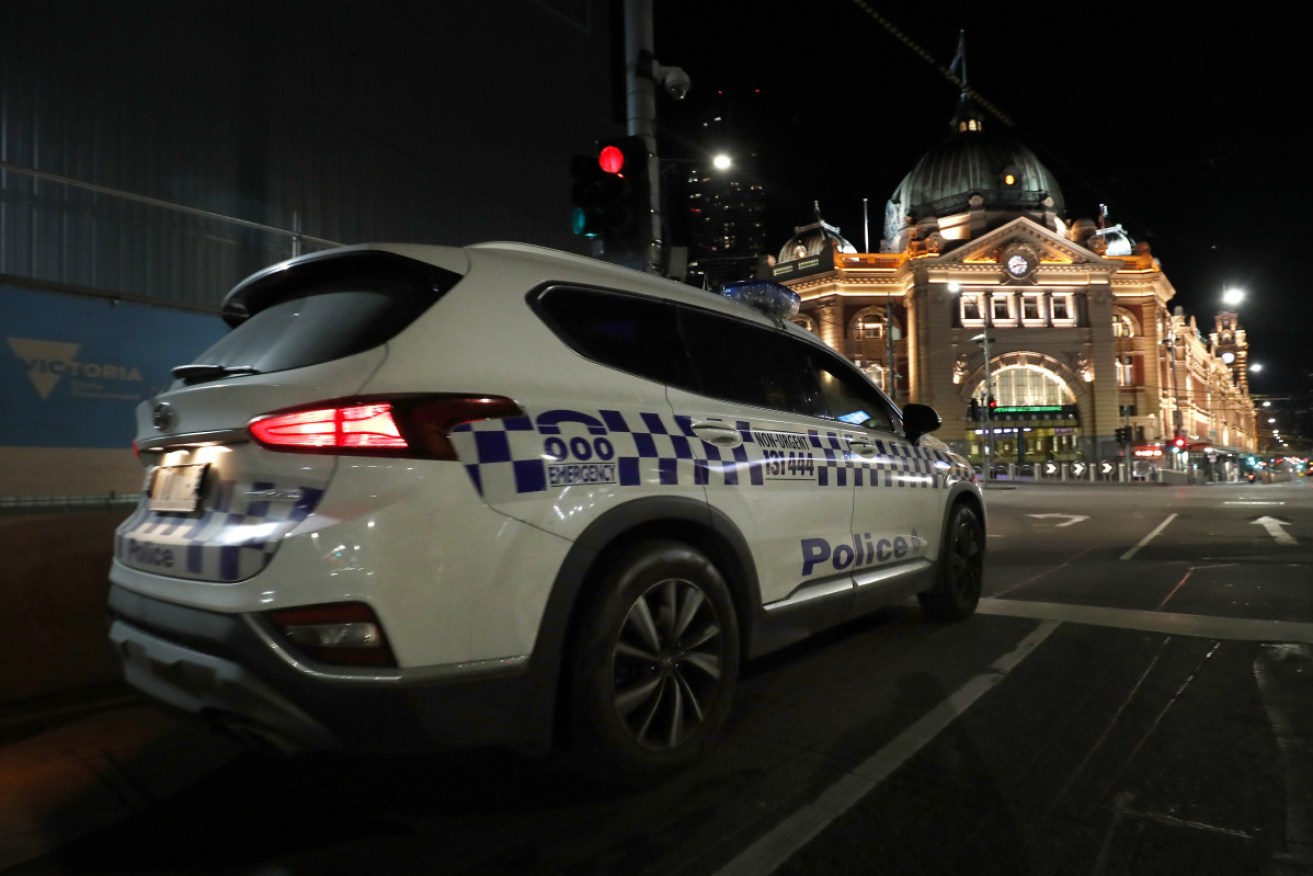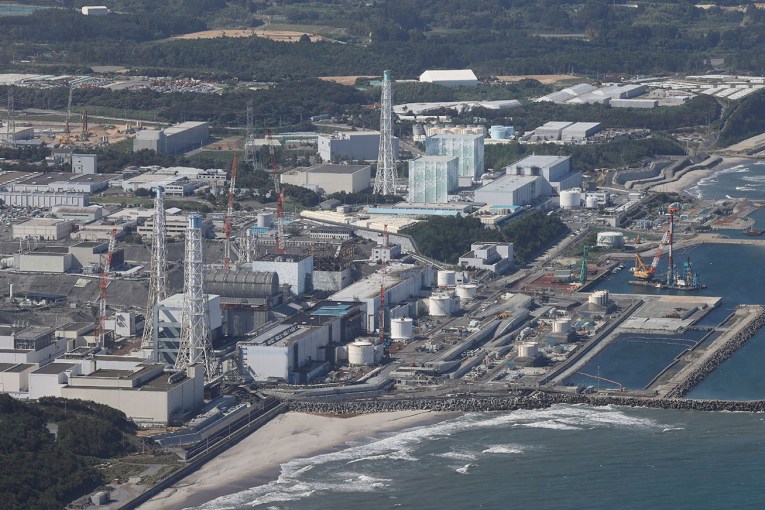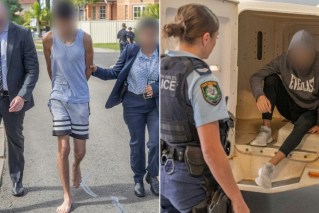COVID curfew crunch: Nearly $1 million in fines but medicos are split on its effectiveness


Police are patrolling Melbourne streets during nightly coronavirus curfew. Photo: Getty
Victoria Police have issued almost $1 million worth of fines to people breaking Melbourne’s strict curfew even as some epidemiologists have questioned its effectiveness in bringing down the state’s numbers.
In the last 12 days, police have caught 555 people breaking the curfew, which is in place every night from 8pm until 5am, and issued $916,860 in fines.
Getting caught out after 8pm comes with a hefty $1652 penalty.
No fines were issued in the first three nights of the curfew, but police are now averaging 70 fines a night, with the record – last Sunday – being 77.
Among those venturing out illegally have been a man who ‘just wanted a burger’, four friends who were ‘chillin’ in a car, and another man looking to have a drink with mates in a hotel.
Three Melbourne vloggers were each issued fines on Wednesday after they posted a video of themselves breaching the curfew rules for a late-night McDonalds run in the CBD.

The vloggers filmed themselves cavorting in the McDonalds. Photo: WeChat
After filming themselves dancing in the McDonalds and returning home one told viewers: “This is why Melbourne’s restrictions are like a fart.”
Police have cracked down on hot-spots, including the Chapel Street precinct where officers say they are fining about 10 people each night.
Premier Daniel Andrews said last week that the controversial curfew was designed to stop people visiting friends and relatives.
“It’s to stop this notion which we think was occurring, ‘I will duck over to a mate’s place. It’s all fine. I feel well.’ That’s what spreads the virus,” he said.
But the state government has not elaborated on the modelling or reasoning behind the curfew and did not respond to questions from The New Daily.
Leading epidemiologists have questioned the effectiveness of the curfew in lowering the cities case numbers.
Catherine Bennett, the chair of epidemiology at Deakin University, said it was likely put in place because of the large numbers of mystery cases which cannot be linked to any other known infections.
“I think in this case it was driven by the mystery cases. They didn’t seem to have a handle on them,” Ms Bennett said.
“It’s trying to limit the activities some people are doing so you’re just cutting down opportunities for more mixing.
“In Wuhan, they were locking people into their homes. It’s not going that far but it is trying to have an element of that restriction in the night time to reduced the opportunities. It makes it easier to police.”
There are important questions about how much it has added to stopping the spread of COVID-19, she said.

Measures designed to help quell the deadly coronavirus outbreak have all but shutdown Melbourne.
“I hope we do evaluate this and understand if it helped,” Ms Bennett said.
“What did curfew add? Did we know other cases were socialising in the evenings? Or is it just generally a way of shutting down movement?
“Should we, or another state, have to go through this again, you want to go into it saying ‘curfew is a necessary thing and this is what it does’. Otherwise, you risk non-compliance.”
Infectious diseases physician Professor Peter Collignon, from the Australian National University, said the curfew was likely targeted at younger people.
“My presumption is that they’re trying to stop people intermingling and getting into groups, particularly young people after hours,” Professor Collignon said.
“The curfew makes it easier to enforce that. You can identify them more.”
He said the state’s case numbers were looking hopeful, but it was impossible to say how much of that was related to the curfew.
“It does look like Melbourne is turning the curve, but it’s what we did ten days ago rather than recently.
“I think that, in retrospect, we’ll have to analyse what’s more effective and how hard you go. Adelaide, Brisbane, Perth and Canberra all had good results without going to that extent. Melbourne had the harshest restrictions and fewer results.
“How much difference do you get for the restrictions? I don’t think anyone knows the answer, but we need to objectively look at it.”
Monash University professor of medicine Paul Komesaroff said New Zealand’s successful approach showed that heavy-handed measures could be effective.
“New Zealand had a draconian response,” he said.
“They went into stage 4 restrictions with a 24-hour curfew and Jacinda Ardern came under stern criticism for being heavy-handed, but it turned out the extreme measures at that time appeared to have been fully successful and her popularity has skyrocketed.
“We don’t know what will happen with the current outbreak, but that was more restrictive than what we’ve got in Melbourne. We know these extreme measures work.”







